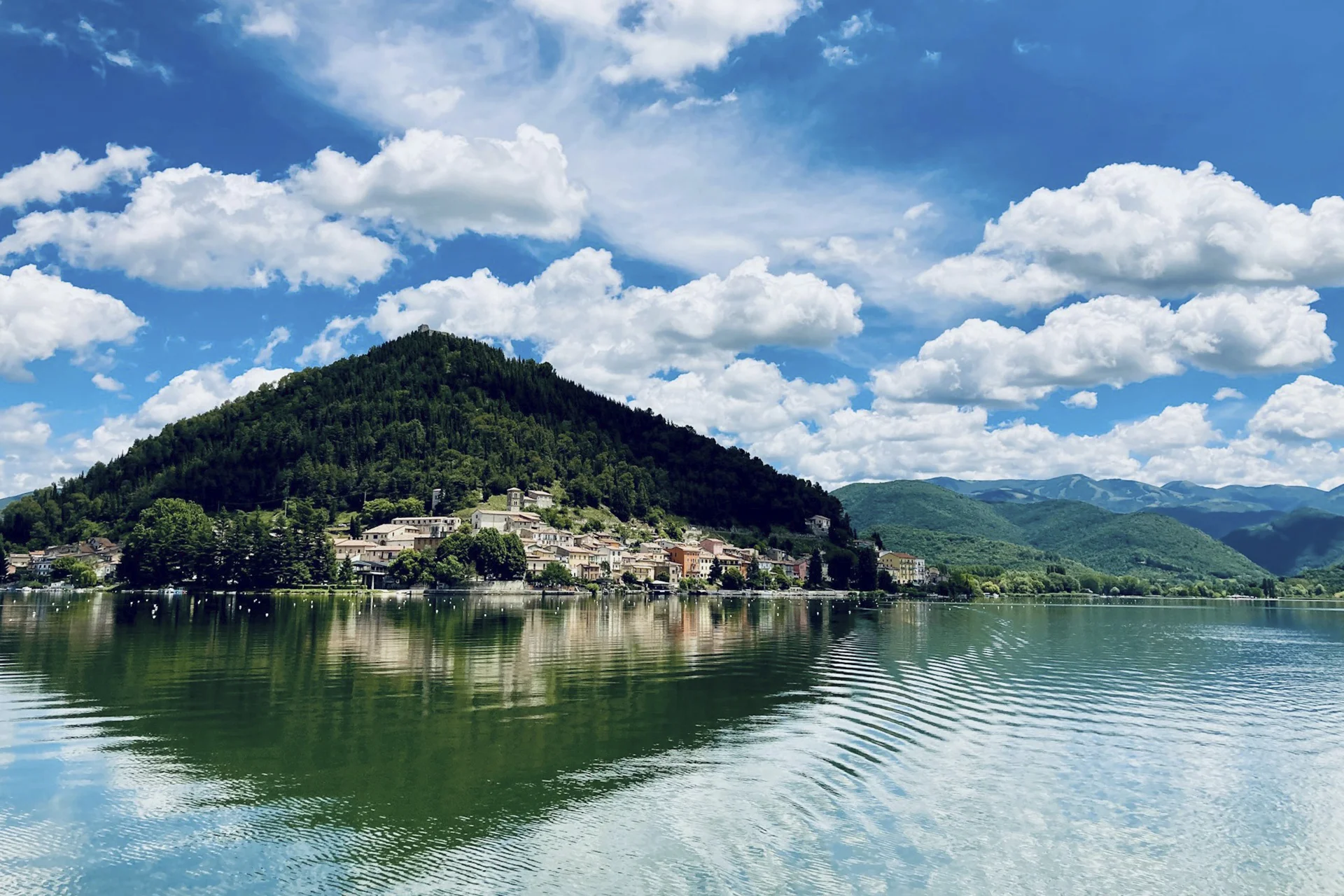
LATITUDE
LONGITUDE
APPELATIONS
The Marino DOC sits in the volcanic hills of Castelli Romani, 25 kilometres southeast of Rome. A region where history, geology, and winemaking intersect with delicious consequences. Here, white wines reign supreme, festivals feature fountains literally flowing with wine, and volcanic soils create something far more interesting than the bland whites Lazio once apologized for. You won't want to miss the Sagra dell’Uva or the chance to see these unique wine fountains in action.
This guide explores everything that makes Marino DOC worth your attention: its terroir, grapes, wineries, and why it’s finally emerging from Frascati’s shadow.
The Marino DOC of Italy occupies the western edge of the Alban Hills, shaped by extinct volcanoes that now cradle vineyards. The zone encompasses approximately 1,700 hectares across Marino, Ciampino, and parts of Castel Gandolfo, all of which are located within the province of Rome. A setting not unlike the famous volcanic wine areas in Sicily, where provinces such as Marsala and Etna are renowned for their terroir.
Unlike some Italian wine regions clinging to past glory, Marino underwent significant modernization: DOC regulations expanded in 2003 to permit single-varietal wines, and again in 2011 to include new wine styles, transforming this appellation into a more diverse and quality-focused designation.
.jpg)
The Mediterranean climate features mild winters and warm summers, with elevation providing crucial diurnal temperature variation that preserves acidity. Essential for producing the crisp, refreshing whites that define the region.
Viticulture in Marino roots itself in Roman antiquity, when wines from the Alban Hills were celebrated as Albanum. These wines supplied Roman emperors, establishing a reputation that persisted through centuries.
Marino also holds historical significance for the church, notably when Admiral Colonna was appointed Captain-General of the Church, reflecting the area's religious and cultural ties that influenced local wine traditions.
The modern DOC designation arrived in 1970, but Marino initially languished in Frascati’s shadow. The turning point came in 2003 when regulations changed to permit single-varietal wines and a greater stylistic range, liberating winemakers to showcase indigenous varieties. The 2011 expansion added passito, late harvest, frizzante, and spumante styles.

Vineyard Hectares
WINERIES
GROWING DEGREE DAYS
The Marino DOC region spans the western slopes of the Castelli Romani volcanic complex, situated between Lakes Albano and Nemi, benefiting from proximity to the Tyrrhenian Sea while gaining shelter from the Apennine Mountains.
The region features a temperate Mediterranean climate, characterized by warm, dry summers and mild, wet winters. Annual precipitation averages 1,037 mm, with the driest months in summer and the heaviest rainfall in November. Temperature variations between day and night help maintain the bright acidity characterizing Marino whites.
The volcanic soils derive from the extinct Alban Hills complex, dominated by tufa — a porous volcanic rock rich in potassium, minerals, and volcanic ash. These soils feature excellent drainage, which forces vines to develop deep root systems that access mineral complexity. The volcanic substrate, mixed with calcareous limestone deposits, creates wines with distinctive minerality and what locals describe as “sapidity.”
The Marino DOC focuses exclusively on white grape varieties. The most common grapes are Malvasia del Lazio, Trebbiano Verde, Bellone, Greco, and Bombino Bianco, while Malvasia Bianca di Candia and Trebbiano Toscano are the supportive grapes for blends.
.jpg)
Both Malvasia and Trebbiano grapes are key to the wines of the region. The Trebbiano grape content in Marino DOC is restricted to 25–55% in blends. Malvasia grapes are used to produce white and red table wines, dessert wines, and fortified wines.
Marino DOC regulations now permit remarkable stylistic diversity: the region produces many types of white wine, including dry and sweet, sparkling and still styles.
.jpg)
The standard Marino Bianco displays a straw-yellow colour, with vinous and delicate aromas, and a dry to off-dry palate featuring distinctive fruity notes. Compared to Frascati, Marino typically shows more vigour and greater intensity.
Marino's white wines shine alongside the robust, flavorful cuisine of Rome and southern Lazio. The wines' crisp acidity, mineral backbone, and moderate body make them remarkably versatile. Some of the best food pairings for Marino wines are:
Marino DOC excels with grilled fish, seafood pasta in tomato-based sauces, fresh mozzarella, white pizza bianca, and herb-forward dishes. Marino wine pairs well with seafood and is a good choice for aperitifs. Sparkling versions work as aperitifs, while passito styles pair with almond-based desserts or aged pecorino.
Marino offers wine tourism with an authentic Roman character. The highlight remains the Sagra dell’Uva (Grape Festival), held annually since 1925 on the first Sunday of October. This four-day celebration features the legendary spectacle of the town’s fountains flowing with wine instead of water. The festival includes historical reenactments, parades in Renaissance costumes, live music, and abundant local food. Beyond the festival, visitors can explore underground cellars carved into tufa rock and tour vineyards. In addition, the proximity to Rome (30–40 minutes) and Castel Gandolfo (6–7 minutes by train) makes Marino an easy day trip.
Visitors can taste Marino DOC wines such as Marino Bianco, Marino Superiore, and Marino Classico, or join guided tastings and vineyard walks that showcase the region’s winemaking traditions.
While Marino DOC doesn't dominate international competitions, the region has accumulated meaningful recognition. The Consortium for the Protection of Marino, founded in 2000, now represents 211 members working to elevate quality standards. Individual producers have earned accolades in major Italian wine guides, including Bibenda, Vinibuoni d'Italia, and Luca Maroni's annual rankings. Recent quality improvements and regulatory flexibility position Marino for wider recognition.
Sustainability in Marino manifests through both traditional practices and modern initiatives. The volcanic soils naturally limit yields without requiring excessive intervention. Gotto d'Oro leads with photovoltaic installations, water treatment upgrades, and participation in cork recycling programs. Parvus Ager practices organic methods. Traditional underground cellars carved into tufa rock offer natural temperature regulation, reducing energy consumption. The 211 consortium members represent mostly small-to-medium producers rather than industrial operations — a structure that correlates with more sustainable, terroir-focused winemaking.